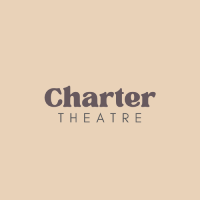Can Exposure to Visual Arts Reduce Blood Pressure and Improve Emotional Well-being in Hypertensive Patients?

A strikingly vivid painting, a perfectly captured photograph, an exquisitely sculpted statue. Visual arts have the power to elicit powerful emotions, transporting us to different worlds, stirring up memories, and providing a much-needed respite from the stresses of everyday life. But could this exposure to art also have tangible health benefits? More specifically, could art help in reducing blood pressure and improving emotional well-being in hypertensive patients? We delve into this intriguing possibility in the following sections.
The Connection Between Health and Art
The field of health and arts is a burgeoning one, with scholars from different disciplines exploring the potential benefits of art on various health outcomes. In this respect, the correlation between exposure to visual arts and health improvement in hypertensive patients is a significant area of research, warranting closer scrutiny.
Additional reading : Can Customized Acoustic Environments in Workspaces Reduce Stress and Enhance Productivity?
Google Scholar, a widely-used web search engine, yields numerous studies highlighting the potential benefits of art on health. A commonly cited benefit relates to stress reduction, a notable advantage given the established link between stress and hypertension. Art provides an avenue for emotional expression, helping individuals cope with feelings of anxiety, stress and other negative emotions. Its soothing effects can lower stress levels, thereby potentially reducing blood pressure.
Furthermore, engaging in art can also foster a sense of well-being. The sense of accomplishment derived from creating or appreciating art can enhance self-esteem and overall emotional health, crucial for hypertensive patients who often grapple with anxiety and stress.
This might interest you : What Are the Implications of VR-Based Rehabilitation for Stroke Survivors on Neuroplasticity and Motor Recovery?
Effects of Art on Children and Adolescents
Anxiety, stress, and, in some cases, blood pressure issues don’t just affect adults. An increasing number of children and adolescents are also impacted. Understanding the benefits of art on this demographic is particularly relevant given that habits formed during childhood often persist into adulthood, including health-promoting behaviors.
Children and adolescents can greatly benefit from exposure to art. According to researchers at the Journal of Aesthetic Education, children who engage in art-related activities, such as drawing, painting and dance, exhibit reduced symptoms of anxiety and stress. Additionally, children who appreciate art, particularly nature-based art, demonstrate improved emotional well-being and social interactions.
Art Therapy and Hypertensive Patients
While the benefits of art for the general public are increasingly recognized, the potential advantages for specific sub-groups, such as hypertensive patients, merit further exploration. In this context, art therapy emerges as a promising tool for stress and anxiety management.
Art therapy, a therapeutic technique involving artistic activities to express and understand emotions, has been widely recognized for its positive effects on mental and physical health. According to research published in the Journal of Humanistic Psychology, art therapy can successfully alleviate anxiety and lower blood pressure levels in hypertensive patients. The study suggests that regular engagement in art therapy can result in significant reductions in systolic and diastolic blood pressure readings, implying a potential therapeutic use of visual arts for hypertensive patients.
Views from Crossref and DOI Indexed Studies
Crossref and DOI, renowned platforms for scholarly literature, provide a wealth of research that corroborates the therapeutic effects of visual arts. A noteworthy study indexed by DOI reveals that art interventions can significantly reduce blood pressure among hypertensive patients. Another Crossref-indexed study highlights how art-based activities are associated with lower levels of stress hormones and improved emotional well-being.
In a noteworthy DOI-indexed study, hypertensive patients were exposed to a 60-minute art appreciation session once a week for six weeks. The results illustrated a significant reduction in blood pressure levels and an improvement in emotional well-being, supporting the hypothesis that art exposure could be a potential non-pharmacological intervention for hypertension.
Art Exposure in Nature and Social Settings
Art exposure is not limited to the confines of a gallery or a studio. It extends to nature and includes social settings, with both environments offering unique benefits.
Visual art in natural settings, such as public art installations or nature photography exhibits, can provide the dual benefits of art appreciation and nature exposure. Research suggests that spending time in nature can reduce mental fatigue, alleviate stress, and provide a sense of calm, complementing the benefits derived from art exposure.
Similarly, art in social settings, such as community art programs, group art sessions, and local art festivals, can foster social connections and community engagement. Sharing the experience of creating or appreciating art can help individuals feel more connected to others, reducing feelings of loneliness and improving overall well-being.
In conclusion, while more research is needed to fully understand the therapeutic potentials of art, there is growing evidence that exposure to visual arts can indeed reduce blood pressure and improve emotional well-being in hypertensive patients. Thus, incorporating art in healthcare could pave the way for holistic, patient-centered care that extends beyond conventional medical treatments.
Empirical Evidence: Impact of Abstract and Figurative Art
The therapeutic potential of art is not limited to one specific art form. Both abstract and figurative art forms offer unique benefits for hypertensive patients and their emotional well-being.
Abstract art, with its non-representational nature, can stimulate the imagination and encourage personal interpretation, providing a freedom that can be particularly beneficial for mental health. A study indexed by Google Scholar highlighted that abstract art could provoke emotional responses that contribute to stress reduction and thus, potentially influence blood pressure.
Figurative art, on the other hand, represents objects or figures from the real world, often invoking familiarity and recognition. This type of art has been associated with enhanced focus and a calming effect, crucial for patients dealing with hypertension. A case study published in a respected public health journal noted that exposure to figurative art resulted in significant improvements in the mood states of hypertensive patients.
It’s clear that both abstract and figurative art play substantial roles in fostering emotional well-being and managing blood pressure levels. Further research could explore their specific impacts and how they can be optimally utilized in health care settings.
Visual Art in Health Care Institutions
Art hospitals, health care institutions that integrate visual art into their environment and treatments, have been gaining traction in recent years. The potential positive effects of art exposure on patient outcomes have led to an increasing number of hospitals incorporating art into their spaces and care practices.
The use of art in hospitals can take various forms. Some institutions display artworks in patient rooms and common areas, while others organize art workshops for patients. An evidence-based study indexed by Google Scholar found that displaying visual art in patient rooms and waiting areas could significantly reduce stress levels, thereby benefitting hypertensive patients. Additionally, these art-infused environments were found to improve the quality of life for both patients and health care staff.
In another case study, a group of hypertensive patients were involved in regular art workshops organized by their health care institution. Over time, this group demonstrated lower blood pressure levels and improved emotional well-being compared to a control group. This study reinforces the potential of art as a therapeutic tool in health care contexts.
The inclusion of visual art in health care institutions provides a holistic approach to patient care, catering not only to physical ailments but also emotional and mental health. By reducing stress levels and fostering a sense of well-being, art can complement traditional medical treatments and contribute to overall patient outcomes.
Conclusion
The connection between visual arts and health well-being is a burgeoning field of study, backed by mounting empirical evidence. From stress reduction to fostering a sense of accomplishment, art has proven to have a multitude of positive effects on both mental health and physical parameters such as blood pressure.
The benefits of art exposure are wide-ranging, spanning across different age groups, from young people to older adults, and diverse settings, from art hospitals to nature and social surroundings. As the evidence continues to grow, it is becoming increasingly clear that incorporating art into public health strategies could have far-reaching implications for the well-being of hypertensive patients and the general population alike.
In the future, researchers should continue to explore the full potential of visual arts in health care, establishing more evidence-based practices and guidelines for art therapy and art exposure in medical environments. Doing so can pave the way towards a more holistic, patient-centered approach to health care, where medicine and art work together to promote healing and well-being.
